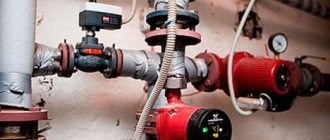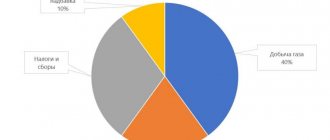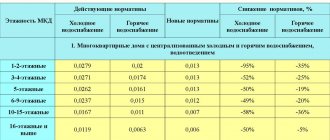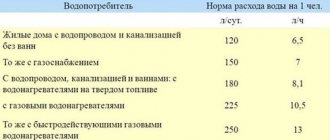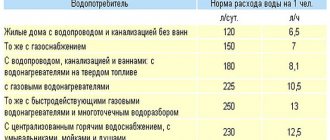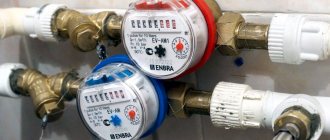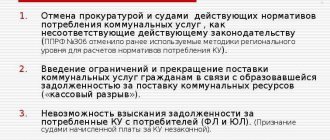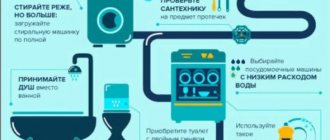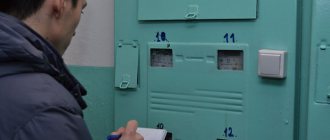How many liters are in a cube?
Very often, buyers of tanks, reservoirs and other containers have the following questions:
- 1 cube is how many liters?
- How many cubic cm (cubic centimeters), dm cube are in a liter?
- How many liters of gas, propane, earth, solution are in a cube?
- How many liters are in a cube of concrete, diesel fuel?
- How many liters are in a cubic meter (cubic meter)?
- How many liters of air are in a cube?
Further, we can identify groups of questions that are more clarifying, for example, how many cubes is the tank 50 liters? Or 500, 5000, 3000, 200 liters - how many cubic meters is that?
These questions are relevant when you need to buy a container of 50, 100, 200 liters - while manufacturers offer containers of 5, 10, 15 cubic meters.
Let's figure out how to convert cubes to liters and vice versa. Whether such conversions between units of measurement depends on the substance that will be placed in the container. Converting cubes to liters First, a short digression into the school physics course.
The generally accepted unit of volume measurement, as is known, is the cubic meter.
Represents 1 cu. m. – the volume of a cube, the side of which is equal to one meter. This unit is not always convenient, so others are often used - cubic centimeters, and cubic decimeters - liters. In everyday life, the most convenient unit of measurement is the liter - the volume of a cube, the side of which is 10 cm or 1 dm. Thus, we get the following ratio: 1 liter = 1 dm3. From here we get the following forms: 1 cubic meter.
m = 1000 l (formula for the volume of a cube in liters) 1 l = 0.001 cubic meters.
m And then, armed with a calculator, we will find answers to some of the questions listed.
- How many liters are 0.5 cubic meters? Solution: 0.5*1000=500 liters. Answer: 500 liters.
- How many liters are 10 cubic meters? Solution: 10*1000=10,000 liters. Answer: 10,000 liters.
- How many liters is 2 cubes? Solution: 2*1000=2,000 liters. The answer is 2,000 liters.
- How many liters is 20 cubic meters? Solution: 20*1000=20,000 liters. The answer is 20,000 liters.
- 30 cubic meters is how many liters? Answer: 30,000 liters.
- 300 cubic meters how many liters? Answer: 300,000 liters.
- 5 cubic meters is how many liters? Answer: 5,000 liters.
- 6 cubic meters - how many liters? Answer: 6,000 liters.
- How many liters are 4 cubes? The answer is 4,000 liters.
Accordingly, the simplest thing: The answer to the question: “1 cubic m how many liters?” — 1000 liters. How many liters are in a cubic meter? Now we will give answers to questions regarding the conversion of liters to cubic meters.
- How many cubes are 100 liters?
Solution: 100*0.001=0.1 cubic meters. meters. Answer: 0.1 cubic meters. - How many cubes are 200 liters?
Solution: 200*0.001=0.2 cubic meters. meters. Answer: 0.2 cubic meters. - 3000 liters how many cubes?
The answer is 3 cubic meters. meters. - 500 liters how many cubes? Answer: 0.5 cubic meters.
- 5000 liters how many cubes? Answer: 5 cubes.
- How many cubes are 1000 liters?
Answer: 1 cubic meter. - How many cubes are 10,000 liters? Answer: 10 cu. m.
- How many cubes is 140 liters? Answer: 0.14 cubic meters.
- 1500 liters how many cubes?
Answer: 1.5 cubic meters.
To simplify the calculations, we suggest you use our online calculator for converting liters to cubes, but you can always do it yourself by using a regular calculator to convert cubes to liters or liters to cubes.
Cost of cold water per 1 cubic meter according to the meter in 2021
Water meters allow you to get serious savings.
In 2021, the government decided to freeze utility tariffs until July 1, 2021: you can read about it here: You can find out how much 1 cubic meter of cold water costs in major Russian cities in 2021 from our table: City Price of cold water Moscow 33.03 RUR/m3 St. Petersburg 25.44 RUR/m3 Novosibirsk 16.50 RUR/m3 Yekaterinburg 33.3 RUR/m3 Nizhny Novgorod 16.93 RUR/m3 Kazan 18.08 RUR ./m3 Kaliningrad 19.54 RUR/m3 Krasnoyarsk 18.16 RUR/m3 Omsk 14.63-17.62 RUR/m3 (depending on the supplier) Perm 25.14 RUR/m3 Rostov-on-Don 11.42 -39.99 RUR/m3 (depending on the supplier) Ufa 22.21 RUR/m3 Chelyabinsk 23.59 RUR/m3 There are also the following average tariffs for cold water supplies:
- The cost of 1 cubic meter of cold water in Russian cities varies from 10 to 30 rubles.
We also note that benefits for services are fully valid.
In our country, the function of regulating tariffs for housing and communal services is performed by the state, and utility tariffs in the regions are left to local authorities. They rely on the following categories of Russian citizens:
- Veterans;
- Other categories entitled to social protection.
- Disabled people of any degree;
- Pensioners;
The government has allocated over 80 billion rubles for subsidies and benefits for these categories of citizens to pay for utility services.
It is also necessary to take into account that at the end of last year there was a certain adjustment to the legislation. Now in apartments/houses where it was possible to install water meters, but the residents themselves refused it, water standards when calculating amounts for consumption are multiplied by a special one.
From which it follows that installing individual water meters will allow you to seriously save on paying for water consumption in 2021. As can be seen from the previous text, Russians will begin to pay more for water only from the 2nd half of 2021.
Average water consumption per person per month
The average amount of water consumed per person can vary greatly.
This depends on several factors:
- climate zone of residence;
- seasons and peak periods;
- technical equipment of housing;
- serviceability of devices and compliance with their requirements;
- people's personal preferences.
So, in the southern regions more water is used than in the northern ones, the same applies to summer time.
The presence of a dishwasher and washing machine greatly increases water consumption, while a two-button flush tank helps save up to 20 percent of water resources. Leaking devices increase water costs by 15-30 percent.
On average, it has been established that each Russian spends about 6 cubic meters of cold water and 3 hot water per month.
Water tariffs
The price list depends on the following conditions:
- maintenance and repair of pipelines;
- expenses for salaries;
- heating costs.
- electricity costs for this;
- water collection method;
- methods of cleansing;
Before calculating the cost of hot and cold water, you need to consider the following points:
- The tariff rate includes the nominal price of water.
- payment standards are calculated in ruble equivalent and are based on the price per cubic meter;
The price of hot water consists of the following factors:
- the cost of 1 cubic meter of cold water, which is heated to produce hot water.
- energy supply, which was spent on heating water (when calculating, the amount of heat used per cubic meter of cold water is taken into account;
To the question of how much a cubic meter of water received with and without a meter costs this year, the answer is simple - it’s the same. The meter does not influence the price per cubic meter in any way. From July 2021, the tariff for supplied cold water is set at 33 rubles 3 kopecks, and for 1 cubic meter of hot water the fee is 143 rubles 76 kopecks.
The resource is cheaper in Krasnoyarsk - m3 of cold water costs 18 rubles 16 kopecks, hot water is more expensive - 176 rubles 44 kopecks. Compared to the beginning of the year, the cost of cold water according to the meter has risen by 7.2 percent, and hot water by 10.6 percent.
For buildings where metering devices are not installed, the amount of heat Q Gcal/m3 for heating one cubic meter of cold water supply with a temperature T2 - 8 degrees to a temperature T1 - 59 degrees must be calculated using the following formula: Q = C x Px(T1-T2) x(1+K) where C is the specific heat capacity of the liquid, and P is the volumetric weight of the liquid. In a building with metering devices, at the end of the billing period, readings are taken from the input riser and water consumption is determined based on tariffs for hot water supply. For example, the building consumed 90 Gcal of heat energy and 1000 cubic meters of hot water.
Divide 90 by 1000. The result is 0.09 Gcal/cubic meter. In order to find out how much a cube of supplied cold water costs, you need to look.
Standard consumption of hot and cold water per 1 person without a meter
Since 2015, the installation of devices for metering consumed resources has become mandatory. Consumers who have installed meters make payments for utilities according to their readings. The rest will still have to pay based on established standards.
The procedure for determining the norm of water consumption per resident is established by Decree of the Government of the Russian Federation of May 23, 2006 N 306. According to this resolution, standards for utility services are finally formed by regional authorities.
When approving them, the characteristics of a residential or private house are taken into account. The standard is calculated per month. For cold and hot water it is calculated in cubic meters. On average, per month there are 6,935 cubic meters per resident. h.v. and 4.75 cu. g.v..
If meters are not installed in the apartment, then the payment for hot water and hot water is calculated based on these indicators. If you have metering devices, you need to pay for the amount of resource actually spent.
The water consumption rate for 2021 for St. Petersburg (according to the appendix to the order of the Tariff Committee) is:
- cold water supply 4.90 cubic meters,
- hot - 3.48 cubic meters.
For Moscow:
- cold water - 6.94;
- hot - 4.75 cubic meters.
How many liters of water per cube according to the meter: example of calculation and ways to save
up to 56 rubles.
- The cost of 1 cubic meter of hot water ranges from 87 rubles.
and higher.
Separately, it should be noted that benefits are fully preserved. The following categories of citizens are eligible for benefits:
- Persons with disabilities (of any degree);
- Other categories that can count on social protection.
- Veterans;
- Pensioners;
To ensure that the above categories of the population can continue to enjoy subsidies and benefits when paying for utilities in the future, the government has allocated more than 80 billion rubles.
In addition, it should be taken into account that at the end of 2021 there were some adjustments to the legislation. Now, in apartments and houses where it was possible to install water meters, but the residents refused to do so, water standards when billing for water consumption will be multiplied by an increasing factor.
From this we can conclude that installing individual water meters will help significantly save on payments for water consumption in 2021. From the information above, we can conclude that residents of Russian regions will have to pay more for water only from the second half of 2021. Of course, any increase in tariffs cannot be called a pleasant moment for the population.
However, if you have installed water meters and know how much a cubic meter of water costs according to the meter, then this increase will not significantly affect your well-being.
If you are unable to pay utility bills, then you should contact the relevant authorities to apply for subsidies. Such subsidies, if allocated, will be able to partially cover the cost of utility bills. In the receipts received monthly by residents, there is such a column - sewerage.
Standards for it are set separately by each region and on average range from 130 to 360 liters per day. They are calculated depending on the region of residence and the degree of improvement of housing.
If the apartment does not have a meter installed, the calculation takes place according to sewerage standards multiplied by the approved tariff.
Methodology for calculating water consumption standards
The rationing of cold and hot water supply, wastewater disposal, as well as the rules for calculating other utilities to the population are regulated by government decree No. 354, in Appendix No. 2, section 1, paragraph 4a, signed in May 2011.
Document for downloading and reading the resolution: Decree of the Government of the Russian Federation No. 354
Tables of standard costs (SNiP 2.04.01-85): Internal cold and hot water supply systems
This document uses standards developed back in Soviet times based on actual measurements of water consumption by the population. A flow meter installed in the basement of the house made it possible to determine the amount of water used by residents in the apartment building. It turned out that every month one person consumes the following amount of water (in liters):
- taking a shower – up to 900;
- cooking - up to 90;
- washing – about 100;
- hygiene procedures, washing dishes and other operations under running tap water – up to 200;
- flushing the toilet and unexpected expenses - up to 500;
- taking a bath - about 800 (if 4 times a month, on average 200 liters per session).
The average figures were divided by the actual number of residents. As a result, average fixed payment standards were approved, depending on the number of people registered in an apartment or private house.
Cold water supply
The cost of cold water supply for the population is calculated using the formula:
Tskhv = n*N*T*K,
wherein:
- n – number of people registered in the apartment;
- N – consumption standard for one person;
- T – the size of the regional tariff, depending on the cost of supplying water to a house or apartment;
- K – increasing coefficient assigned by utility organizations to calculate the payment amount.
Note! The size of the increasing coefficient is approved at the regional level; it cannot be more than 2.
It is estimated that about 7,000 liters of cold water are consumed by one person every month. The following factors influence the amount of consumption:
- climate of the region;
- seasonal changes;
- used household appliances;
- technical condition of shut-off valves;
- personal habits and lifestyle of people.
We recommend: How many watts are in 1 kilowatt of electricity
It has been confirmed that in warm climates, cold water is consumed more intensively than in cold climates. The situation is similar with the seasons.
Water consumption increases when the water taps and flush tank in the toilet are not properly sealed, and when wasteful plumbing and household appliances are used.
Hot water supply
According to statistics, the volume of hot water consumed is half that of cold water. The average monthly consumption rate for hot water supply is set at 3 thousand liters.
A separate payment for hot water supply is due to the fact that additional resources are used to heat water, requiring appropriate compensation. In addition, different organizations provide water heating and supply, which requires separate payment from consumers.
Water disposal
Depending on the region, the norms for this indicator are set in the range from 13 to 36 cubic meters per month. The tariff is set regionally and takes into account the characteristics of local infrastructure and the amount of wastewater disposal costs.
How many liters of water are in 1 cubic meter according to the meter?
The fact is that the weight of any substance is affected not only by volume, but also by density. Note! 1 cube of salt water will weigh not 1 ton, but a little more, since the density of such a liquid is greater than the density of simple water.
Let's find out where you can see liters and cubes on such meters:
Now you know how many liters are in one cube of water.
The same rule applies to other liquids. Many people have meters at home that show liquid consumption.
Let's summarize. One cube of water contains 1 thousand liters of water.
This figure can be obtained using simple mathematical calculations. The number of cubes and liters of water consumed is displayed on the counter. The red numbers are liters and the black numbers are cubes. However, volume and mass should not be confused, since 1 volumetric meter of water will contain 1,000 kg of water, but in the case of other liquids this rule may not be correct.
Article rating:
(4 ratings, average: 4.50 out of 5)
Loading.Share with friends:TweetSharePlusShareSendClassLinkPin
How to calculate the cost of one cubic meter of water and pay the receipt online
The following columns are filled in: readings at the beginning of the billing period and final data in the form of 5 digits.
Some samples also have a “Difference” line and a written tariff, so you can immediately calculate the cost. It is not necessary to bring payment receipts to the management company.
Testimony can be transmitted in several other ways:
- by telephone to the housing and communal services call center operator; SMS to a short number assigned to the management company; via the Internet, using online services of banks and other payment systems. Amount to be paid
To calculate the monthly fee using the meter, you don’t even need a calculator (in the example, the cost per unit is taken conditionally, you need to check the tariff with the regulatory organization), it is important to take the readings correctly. For example, at the end of the previous month the device shows 00015680.
This means that 15 cubic meters and 680 liters were spent.
When transmitting readings, liters must be rounded to cubes according to the standard mathematical rule. The final figure should be reflected in the sample payment receipt. The second digit must be removed at the end of the current month, for example 00027351, which corresponds to 27 cubic meters and 351 liters of water consumed.
To obtain calculated data, the previous ones are subtracted from the rounded readings of the current month: 27−16 = 9 cubic meters.
Next, multiply the difference in values by the current regional tariff: 9 cubic meters.
* 30 rub. = 270 rubles. This example does not take into account expenses for general household needs. The management company lists them as a separate line on the receipt. They represent a fixed amount or are calculated based on the difference in the information submitted and the readings of common house meters.
Operating tips When water meters first appeared, many were afraid of the cost of the devices themselves, but installed flow meters significantly reduce the cost of consumed resources.
Heating and thermal insulation on water tanks 20 m3
At the customer's request, it is possible to provide thermal insulation of the container and a heating system. A 20m3 heated tank is mainly used in 2 cases:
- in regions with low temperatures where water may freeze;
- for storing hot water.
The container is heated using:
- Heating electrical cable. A self-regulating thermal cable is attached to the wall of the tank. The system also includes: a heating module, a distribution module, temperature sensors and a control unit.
- Coil - internal pipeline system with steam-water coolant.
In addition to the heating system, a layer of thermal insulation is applied to the tank to minimize heat loss. Thermal insulation also comes in two types:
- Polyurethane foam. In the standard version, a layer of polyurethane foam is sprayed onto the outer surface of the container. This type of insulation also serves as waterproofing and provides additional protection against corrosion.
- Mineral wool and cladding in the form of galvanized steel sheets.
How many liters of water in 1 cube
If you have a vegetable garden, there is a need for regular watering, and consumption increases by 10 m3.
In order to save money, some install magnets and seals to reduce readings.
The latter should be mandatory, but magnets are prohibited by law, and the owner may be fined during inspection.
To understand how many liters are 1 cubic meter of water and learn how to calculate meter readings, just look at a practical example: At the end of September, the meter showed 00021889, a month later - 00045346.
The first numbers after the zeros are cubic meters and are subject to rounding. It turns out 45 and 22 respectively.
45 – 22 = 23 cubes used. The receipts show the cost of 1 cubic meter. water. It must be multiplied by the result obtained.
For example, at a price of 35 rubles. the result is as follows: 23 x 35 = 805 rubles. According to this scheme, the “cubes” of both hot and cold water supply are calculated. According to statistics, citizens waste about 80% of water, which entails a huge overpayment.
To save money, you need not only to be able to convert liters to cubic meters, but also to know a few simple tips: Repair all the taps. If this is not done, about 1 cubic meter will be lost monthly. m.; Open taps only when necessary; Soak dishes before washing.
In a few minutes it will have time to dissolve, and you will not have to scrub it under the flow of liquid from the tap; Do not throw away used water. For example, if there is liquid left in the kettle or after boiling eggs, it can be used to water indoor plants; Avoid taking a bath and replace it with a shower. In this case, water consumption is significantly reduced; Install a diffuser on the tap - it allows you to save up to 40%; Install a boiler.
It is relevant if water flows from a “hot” tap at an insufficiently high temperature, and the management company responsible for providing services does not respond to complaints;
Features of water supply rationing in rural areas
The supply of water to private houses in rural areas is subject to rationing in the case of centralized water supply to consumers by utility companies. It is possible to assign a separate payment if there is a water stand on a public street.
We recommend: Energy sales organizations in the Moscow region
It must be taken into account that water is additionally consumed for watering the garden, therefore, in the appropriate season, if there is no water meter in a private house, a separate fixed amount is assigned for these needs.
If residents of the private sector do not provide water supply centrally, including installation and maintenance of systems, utility standards are not applicable in this situation.
How many liters of water in a cube according to the meter in 2021
cubic, does not mean the same amount of fuel contained. For the indicated mass of gas with the marked density, the calculation is as follows: If propane and butane are poured in equal proportions, the total volume of gas in the cylinder is 20 cubic meters.
Everyone loves to take a hot bath.
But not everyone thinks about the volume of water required for this procedure.
The question about the capacity of the bathtub cannot be answered in monosyllables.
Modern industry produces three types of bathtubs, depending on the material used: The volume of the product is determined by multiplying its length, width and height. But it is not always possible to accurately calculate this value, especially when it comes to acrylic bathtubs.
Sometimes performed in an irregular shape, following the contours of the human body, including built-in hoops for holding hands and other delights that make it difficult to accurately determine the volume. Without boring the reader with lengthy calculations and a large number of numbers, it can be noted that the capacity of the font ranges from one hundred and forty for the smallest models, to two hundred and fifty for huge bathtubs.
The exact parameters are indicated by the manufacturer in the passport of a specific model. Considering the significant water consumption when taking a bath regularly, a good way to save money is to use a shower. This procedure will require three times less water - about 40.
Another way is to use pre-collected water. There are many original shower design options on the Internet, including a homemade bucket attached to a hoop, filled with water and turned over using an attached chain.
If you first fill a container with water for washing dishes, washing your face, brushing your teeth for other purposes, you will end up with significant savings. It is estimated that up to fifteen liters of water escape through an open tap every minute; in an hour this volume will be ninety liters - a considerable consumption. Considering that more liquid when used by washing dishes and washing under an open tap is wasted, it is worth using the above method to significantly reduce consumption.
How much does a cubic meter of water cost according to the meter in 2021?
The presence of water meters makes it possible to save significantly. Now let’s look at how much a cubic meter of water costs (when paying by meter) and how much you will need to pay in 2021 for water supply services. In Russia, the function of regulating utility tariffs is assumed by the state, and rates for specific cases are under the jurisdiction of regional authorities. And this year our government decided to make a gift to our citizens and increase tariffs in two stages. At the first stage, from January 1, 2021, it will be increased by 1.7%, and at the second stage, from July 1, 2021, by 2.1%: Download the document itself - For Moscow, the price for 1 cubic meter of water according to the meter in 2021 from July 1 will increase by 5% compared to the previous year.
For those who are interested in how much 1 cubic meter of water costs (according to the meter) for the first half of 2021, we inform you:
- The cost of one cubic meter of hot water is 125.69 rubles.
- The cost of one cube of cold water is 38.06 rubles;
Of course, these prices cannot be called low, but they are in accordance with both the standard of living and the level of wages of Muscovites. Consumers Tariffs for drinking water, rub./cub.m.
Tariffs for water disposal, rub./cub.m.
1st half year 2nd half year 1st half year 2nd half year Population (with VAT) 38.70 40.48 27.47 29.57 Other consumers (without VAT) 32.25 33.73 22.89 24.64 Regional water supply and sewerage organizations, by places of fulfillment of obligations Moscow (excluding VAT) 23.72 24.81 19.84 20.75 Tariffs will change significantly towards higher prices only in the second half of the year from July 1, 2021.
This increase was planned. It has been adjusted as part of the program for the socio-economic development of the capital until 2021.
No. Name of centralized water supply and sanitation systems in the territories of intra-city municipalities of the city of Moscow Name of consumers Tariffs (RUB/m3) from 01/01/2021 to 06/30/2021 Tariffs (RUB/m3) from 07/01/2021 to 12/31/2021 Drinking water Drainage Drinking water
Arithmetic of water meters
If you're surprised by your rent bill each month when you receive your rent receipt, it's worth considering whether you're really only paying for your expenses. As a rule, most of the expenses are payments for the consumption of hot and cold water. However, are you sure that you are not paying for the water leaking from your neighbor's tap? An electricity meter is installed in each apartment, and a water meter? Will it save you money? The life hacker decided to figure it out.
©photo
According to data from housing maintenance offices, on average, each person who installs a water meter in an apartment spends 3.5 cubic meters per month. m. cold and 2.5 cubic meters. m of hot water, plus the cost of drainage of used water - this is the sum of the volumes of hot and cold water consumed. At the same time, how much does a tenant pay if he or she has not bothered to install an apartment water meter? Let's compare other methods of paying for consumed water with payment based on water meter readings:
- Payment according to the established standard. For example, in Moscow, in houses with centralized hot water supply, the consumption rate for each resident registered in the apartment is established: 6.935 cubic meters. m. cold and 4,745 cubic meters. m. hot water. It turns out that those who choose such a payment system overpay on average 1.7 times.
- Payment according to the readings of the common house meter. With this scheme, the entire volume of water consumed in the house is distributed among all apartments in proportion to the registered residents, while 5% is deducted from the total volume for general house needs plus the expenses of tenants of the premises. That is, if you spend 150 liters of water monthly, and your neighbor’s taps are leaking and he uses 700, you will pay the same, and the more your neighbor spends, the greater the total amount in your receipt.
To be convincing, we present a simple calculation when paying according to the established standard and using an apartment water meter for a family of three living in a Moscow apartment with centralized hot water supply at current tariffs:
- Cold water: 15.45 rub. for 1 cubic m.
- Hot water: 74.67 rub. for 1 cubic m.
- Water disposal: RUB 11.61 for 1 cubic m.
| Payment according to the established standard | Payment by apartment meter | |
| Cold water | 6.935 m3 x 3 persons. x 15.45 rub. | 3.5 m3 x 3 persons. x 15.45 rub. |
| RUR 321.44 | RUB 162.23 | |
| Hot water | 4.745 m3 x 3 people x 74.67 rub. | 2.5 m3 x 3 people. x 74.67 rub. |
| RUR 1,062.93 | RUB 560.03 | |
| Water disposal | 35.031 m3 x 11.61 rub. | 18 m3 x 11.61 rub. |
| RUR 406.71 | RUR 208.98 | |
| Total | 1791, 08 r. | RUB 931.24 |
“It turns out that in a year a family that pays by apartment meter saves a little more than 10 thousand rubles. At the same time, the average cost of installing a water meter in Moscow is 3,600 rubles. Accordingly, installing a meter will pay for itself within 4 months.
Are you still unsure whether to install a water meter?
How many liters are in one cube of water according to the meter?
The result is then multiplied by the tariff established in the region.
According to statistical studies, more than eighty percent of water resources are wasted.
Therefore, it is necessary to be careful with consumption, which is facilitated by the installation of individual metering devices. It is quite simple to understand the features of converting into units of measurement that are more familiar in everyday life, as is the procedure for taking readings from the water meter display.
Great article 10 Did the article help? Rate her
Ratings: 4
Loading.
You save using LCD services
- No
- I don’t deny myself anything
- Only when there is no money to pay
- Yes
Poll Options are limited because JavaScript is disabled in your browser. Reviews of meters © 2021–2021 – All about flow meters for electricity, gas and water Reproduction of materials is permitted only with indication of the original source Scroll Up
How much does a cubic meter of water cost according to the meter in 2016?
up to 30 rubles.
The cost of 1 cubic meter of hot water ranges from 60 rubles.
up to 150 rubles. Consumers Period Tariffs for drinking water, rub./cub.m. Tariffs for water disposal, rub./cub.m.
Population (including VAT) from 01/01/2016 to 06/30/2016 30.87 21.9 from 07/1/2016 to 12/31/2016 33.03 23.43 Budgetary organizations from 01/1/2016 to 06/30/2016 26.16 18.56 s 07/1/2016 to 12/31/2016 27.99 19.86 Organizations, owners of non-residential buildings from 01/1/2016 to 06/30/2016 28.17 19.46 from 07/1/2016 to 12/31/2016 28.65 19.9 Water supply and sewerage organizations region's economy from 01/01/2016 to 06/30/2016 21.5 17.67 from 07/1/2016 to 12/31/2016 21.93 18.34 From the table it can be seen that the last time tariffs changed towards higher prices was July 1, 2021. This increase was planned.
It has been adjusted as part of the program for the socio-economic development of the capital until 2021. No. Name of centralized water supply and sanitation systems in the territories of intra-city municipalities of the city of Moscow Name of consumers Tariffs (rub./m3) from 01/01/2016 to 06/30/2016 Cold water Wastewater disposal 1 Urban district Shcherbinka Population (with VAT) 18.30 22 .24 Other consumers** 15.51 18.85 2 Settlements Moskovsky, Vnukovskoye, Voskresenskoye, Desenovskoye, Mosrentgen, Sosenskoye, Filimonkovskoye Population (including VAT) 34.17 31.97 Other consumers** 28.96 27.09 3 Settlements Shchapovskoe, Klenovskoe Population (with VAT) 23.52 30.29 Other consumers** 19.93 25.67 4 Settlement Voronovskoe, Krasnopakhorskoe (except for the village of Minzag), Mikhailovo-Yartsevskoe, Rogovskoe Population (with VAT) 19.23 31 .41 Other consumers** 16.30 26.62 5 Subsistence settlement Minzag settlement Krasnopakhorskoe Population (with VAT) 20.40 22.97 Other consumers** 17.29 19.47 6 Settlement Ryazanovskoe Population (with VAT) 17, 63 23.27 Other consumers** 14.94 19.72 7 Troitsk urban district Population (including VAT) 20.17 24.10 Other consumers** 17.09 20.42
How many liters of water are in 1 cube: visually about the abstract
There was nothing left to do but attach a bucket and get water the old fashioned way, using a “korba”.
For those who don’t know, it’s something like this weird design: So, in less than two days, the four of us used up 10 buckets of water. I think everyone knows how many liters are in a bucket – 10.
After that, I “fixed” the pump and discovered the essence of the experiment. And already at home we made simple calculations.
At that time, our average monthly water consumption was 10 cubic meters for three, that is, 1000 buckets. Divide by 30 days, we get 33 buckets per day, 11 per person.
How did the four of us (!) manage to fit into 5 buckets for two days? Yes, we didn’t do laundry at grandma’s and used, sorry, the “facilities in the yard.” However, an important role in reducing water consumption was played by the fact that to obtain it it was necessary to perform an additional action, and not just turn the tap.
Extracting each bucket “by hand” stimulates savings greater than any counter.
Having come to this conclusion, the first thought was to abandon the water supply and dig a well near the entrance. However, then they decided not to go to extremes, limiting themselves to introducing a “bucket” measurement system.
Now, to the question “how many liters of water are in 1 cubic meter”, my daughter answers not “1000 liters”, but “100 buckets”.
Simple calculations showed that one bucket of water corresponds to: 1 minute in the shower; 1 minute of open tap while washing or brushing your teeth; flush the toilet with a large button; and so on... I don’t know what had more of an effect: a more visual representation of consumption or the argument “he who doesn’t save water doesn’t spare his grandmother.”
However, the very next month we used 2 cubic meters less. Somehow, by itself, the time spent in the shower was reduced, and a glass for brushing teeth appeared on the sink... Moreover, which is typical, only after that we seriously approached others. This allowed us to reduce consumption by another 1 cubic meter.
Now we use 6.5-7 cubic meters of water per month, which is quite normal for a family of three.
